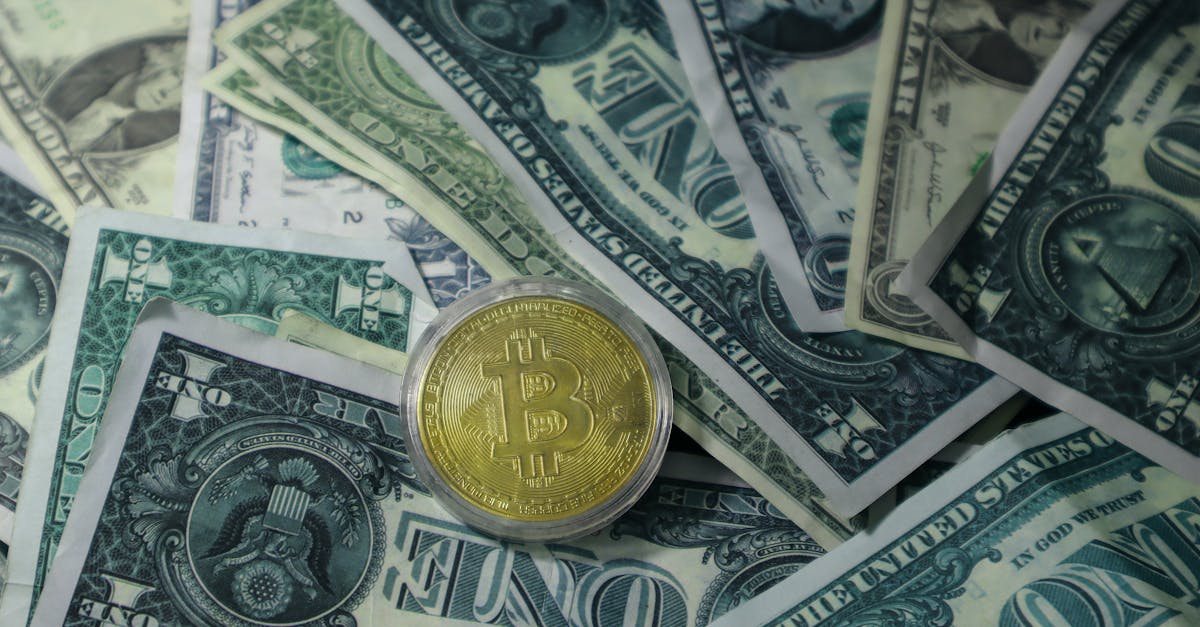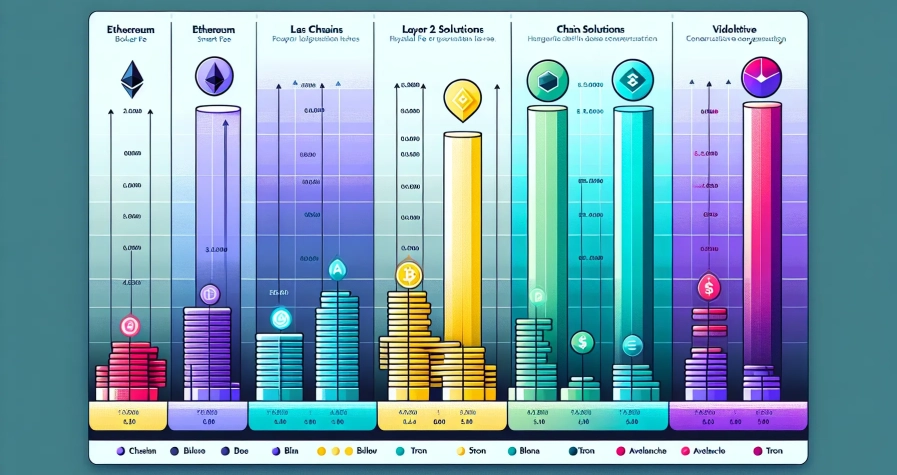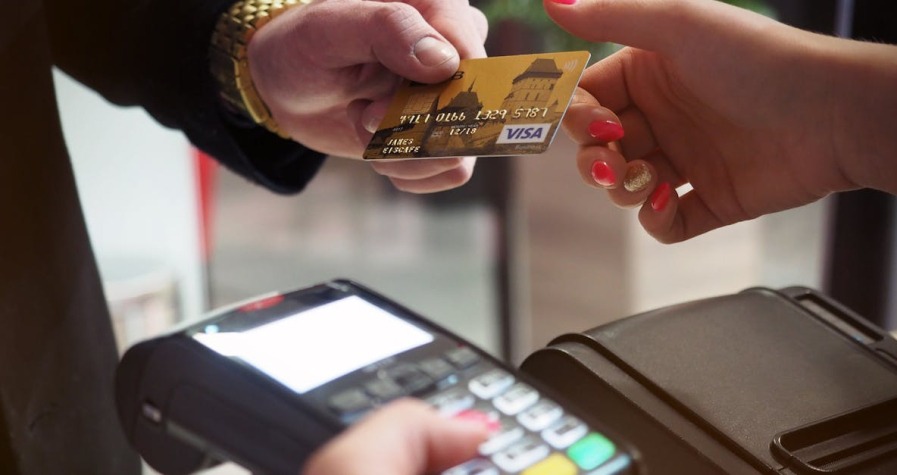Crypto trading offers exciting opportunities to grow your wealth,but it also comes with serious risks. The volatile nature of digital assets, combined with the rapid pace of the market, means that a single misstep can wipe out your gains or even drain your account. Whether you’re a beginner just dipping your toes into Bitcoin or an experienced trader exploring DeFi tokens, understanding what not to do is just as important as knowing your strategies.
The reality? Most traders lose money not because the market is impossible to navigate, but because they fall into avoidable traps. Emotional decisions, lack of planning, and ignoring key fundamentals consistently drain capital from otherwise promising portfolios. The good news is that awareness and discipline can protect you from these pitfalls.
In this guide, we’ll walk through five critical mistakes that could cost you money when trading crypto,and more importantly, how to avoid them. From building a solid trading plan to understanding hidden costs, these insights will help you trade smarter, protect your capital, and improve your long-term success in the crypto markets.
Key Takeaways
- Trading crypto without a clear strategy leads to emotional decisions that consistently drain capital and result in losses.
- Proper risk management and position sizing—risking only 1-2% per trade—protects your account from devastating losses and keeps you in the market long-term.
- FOMO and chasing pumps often means buying at inflated prices right before early investors exit, leaving you with depreciating assets.
- Thorough due diligence on crypto projects helps you avoid scams, rug pulls, and failed tokens by identifying red flags like anonymous teams and unrealistic promises.
- Ignoring tax obligations and transaction fees when trading crypto can erode returns significantly and potentially result in legal penalties from tax authorities.
1. Trading Without a Clear Strategy or Plan
One of the fastest ways to lose money in crypto is to trade on impulse. Without a clear strategy guiding your decisions, you’re essentially gambling,and the house (or in this case, the market) usually wins.
Why Emotional Trading Leads to Losses
Emotions are powerful, and they’re terrible trading partners. Fear and greed drive countless poor decisions in the crypto space. When prices spike, excitement takes over and you might buy at the peak. When prices crash, panic sets in and you sell at a loss, only to watch the market recover hours later.
This emotional rollercoaster isn’t just stressful,it’s expensive. Studies show that traders who make decisions based on fear or hype consistently underperform those who stick to analytical, rule-based approaches. Panic selling during corrections locks in losses, while FOMO buying during rallies leaves you holding bags when the inevitable correction arrives.
Discipline is your best defence. By creating a trading plan before you enter any position, you establish guardrails that keep emotions in check. When you’ve predefined your rules for entering and exiting trades, you’re less likely to second-guess yourself or make rash decisions when volatility strikes.
Setting Entry and Exit Points
A solid trading strategy includes clear entry and exit criteria,specific conditions that must be met before you buy or sell. This might be based on technical indicators (like support and resistance levels, moving averages, or RSI), fundamental catalysts (like protocol upgrades or partnerships), or a combination of both.
For example, instead of thinking “I’ll buy more Bitcoin if it dips,” a proper plan would specify: “I’ll enter a long position if BTC breaks above $45,000 with volume confirmation and RSI above 50. My stop-loss will be set at $42,500, and I’ll take profits at $50,000.”
This level of specificity does several things. It prevents overtrading (jumping into every price movement), reduces transaction fees from unnecessary trades, and forces you to evaluate risk-reward ratios before committing capital. You’ll also avoid the classic trap of moving your stop-losses or “hoping” a losing position turns around,because your plan dictates your actions, not your emotions.
Without this structure, you’re navigating one of the world’s most volatile markets blindfolded. And that’s a recipe for losses.
2. Ignoring Risk Management and Position Sizing
Risk management isn’t the glamorous side of trading, but it’s what separates professionals from amateurs. The traders who survive long-term aren’t necessarily the ones who pick the most winners,they’re the ones who manage their losses effectively.
The Danger of Overleveraging
Leverage is a double-edged sword in crypto trading. It allows you to control larger positions with less capital, amplifying your potential profits. But here’s the catch: it also amplifies your losses. And in crypto’s notoriously volatile markets, overleveraging is one of the quickest ways to get liquidated.
Many exchanges offer leverage ratios of 10x, 20x, or even 100x. While a 100x leveraged position sounds thrilling, it means that a mere 1% move against your position can wipe out your entire investment. Even experienced traders get caught off guard by sudden price swings, stop hunts, or flash crashes that trigger liquidations before they can react.
For inexperienced traders especially, high leverage is dangerous. The psychological pressure of watching a leveraged position move against you often leads to poor decision-making,doubling down on losing trades, removing stop-losses, or panic closing positions at the worst possible moment.
If you do use leverage, start small. Many successful traders limit themselves to 2x or 3x leverage at most, ensuring they have breathing room even during volatile market conditions. Remember: the goal is to stay in the game long enough to profit, not to get knocked out by a single bad trade.
How to Calculate Appropriate Position Sizes
Position sizing is about determining how much capital to risk on any single trade. A common rule of thumb is the 1-2% rule: never risk more than 1-2% of your total trading capital on a single position.
Here’s how it works. Let’s say you have a $10,000 trading account. Using the 2% rule, you’d risk a maximum of $200 per trade. If your technical analysis suggests entering Bitcoin at $44,000 with a stop-loss at $42,000 (a $2,000 risk per BTC), you’d calculate your position size by dividing your risk amount by the per-unit risk: $200 ÷ $2,000 = 0.1 BTC.
This approach ensures that even if you hit a string of losing trades, you won’t deplete your account. Ten consecutive 2% losses would only reduce your capital by about 18%,painful, but survivable. Compare that to risking 20% per trade, where two losses in a row cut your account in half.
Your position size should also reflect your conviction and the quality of your setup. A high-probability trade backed by multiple confirmations might warrant a full 2% risk, while a speculative play on a low-cap altcoin might deserve only 0.5%.
The bottom line: protecting your capital is more important than chasing big wins. Risk management keeps you in the market long enough to capitalize on the opportunities that really matter.
3. Falling for FOMO and Chasing Pumps
“This coin just went up 50% in an hour,I need to get in before it’s too late.” Sound familiar? That’s FOMO (fear of missing out), and it’s one of the most expensive emotions in crypto trading.
Recognizing Market Manipulation and Hype Cycles
Crypto markets are rife with pump-and-dump schemes, coordinated buying campaigns, and influencer-driven hype. When you see a coin skyrocketing on your watchlist, your first instinct might be to jump in. But often, by the time retail traders notice the rally, the smart money is already preparing to exit.
Here’s how it typically plays out: a group of early buyers (or insiders) accumulate a token at low prices. They then generate hype through social media, Telegram groups, or paid influencers. As retail traders pile in, prices surge,creating the illusion of unstoppable momentum. Once the rally reaches a fever pitch, the early buyers dump their holdings, leaving latecomers holding depreciating assets.
These manipulated rallies often exhibit telltale signs: sudden, vertical price action with no clear fundamental catalyst: aggressive promotion from anonymous accounts: thin trading volume that doesn’t match the price movement: and a lack of organic community discussion before the pump.
Objective analysis is your shield against FOMO. Before entering any position, ask yourself: What’s driving this rally? Is there a legitimate catalyst (partnership, product launch, major adoption), or is it just hype? Has the price already extended too far from key support levels? If you can’t answer these questions confidently, it’s probably better to sit out.
Timing Your Entries Strategically
Successful trading isn’t about catching every move,it’s about entering high-probability setups with favorable risk-reward ratios. That means waiting for confirmation rather than chasing price.
Instead of buying during a parabolic rally, look for strategic entry points: pullbacks to support levels, consolidation after an initial breakout, or confirmed trend reversals backed by technical indicators. These entries offer better risk-reward because your stop-loss can be placed tighter, and you’re not buying into already-stretched valuations.
Consider using limit orders rather than market orders when possible. This forces you to wait for your target price rather than impulsively buying at whatever the market offers. It’s a small psychological trick that adds discipline.
And here’s a hard truth: it’s okay to miss a rally. There will always be another opportunity in crypto. Protecting your capital by avoiding bad entries is far more valuable than participating in every pump. The traders who succeed long-term are the ones who patiently wait for their setups rather than desperately chasing every green candle.
4. Neglecting to Research Projects and Due Diligence
Not all crypto projects are created equal. For every legitimate innovation, there are dozens of poorly conceived tokens, outright scams, and projects destined to fail. Trading without proper research is like investing blindfolded,you might get lucky occasionally, but eventually, you’ll walk into a wall.
Red Flags to Watch for in Crypto Projects
Scam projects and low-quality tokens often share common characteristics. Learning to spot these red flags can save you from devastating losses.
Anonymous or unverifiable teams: Legitimate projects are typically fronted by real people with verifiable credentials and industry experience. If the team is completely anonymous or their LinkedIn profiles look suspiciously vague, proceed with extreme caution.
Vague or plagiarized whitepapers: A project’s whitepaper should clearly articulate its value proposition, technology, tokenomics, and roadmap. Be wary of whitepapers filled with buzzwords but light on technical details, or those that appear copied from other projects.
Unrealistic promises and guarantees: If a project promises guaranteed returns, “risk-free” gains, or claims to solve every problem in crypto, it’s likely too good to be true. Legitimate projects are transparent about challenges and risks.
Poor community engagement: Check the project’s social media and community channels. Are there real discussions happening, or is it just bots and spam? A healthy project has an engaged community asking substantive questions.
Aggressive influencer marketing: While marketing is normal, be suspicious of projects that rely heavily on paid influencer promotions, especially from accounts that shill multiple projects. This often indicates the team is prioritizing hype over building real value.
Suspicious tokenomics: Review the token distribution. If the team holds an enormous percentage of tokens, or if there are unclear lock-up periods, that’s a major red flag. Insiders could dump on retail holders at any time.
Essential Resources for Vetting Cryptocurrencies
Proper due diligence requires checking multiple sources and verifying claims independently. Here’s where to start:
Project website and whitepaper: Read the actual whitepaper (not just a summary). Understand what problem the project solves, how the technology works, and what differentiates it from competitors.
Team verification: Research team members on LinkedIn, GitHub, and Twitter. Look for previous projects they’ve worked on and their track record in the industry.
Blockchain explorers: Use tools like Etherscan (for Ethereum tokens) or equivalent explorers to verify token supply, holder distribution, and transaction history. Check for unusual concentration or suspicious activity.
Community channels: Join the project’s Discord, Telegram, or Reddit. Gauge the quality of discussions and how the team responds to questions and criticism.
Independent analysis: Read reviews from reputable crypto news sites, watch critical analysis videos (not just promotional content), and check forums like Reddit for unfiltered community opinions.
Audits and partnerships: Verified smart contract audits from firms like CertiK or Trail of Bits add credibility. Legitimate partnerships with established companies (that can be independently confirmed) are also positive signals.
Yes, thorough research takes time. But spending a few hours vetting a project can save you from losing thousands of dollars to a rug pull or failed experiment. In crypto, due diligence isn’t optional,it’s essential.
5. Overlooking Tax Implications and Transaction Fees
It’s easy to focus on profits and forget about the less exciting aspects of trading: taxes and fees. But these costs are real, and ignoring them can seriously erode your returns,or land you in legal trouble.
Understanding Crypto Tax Reporting Requirements
Contrary to what some traders believe, cryptocurrency transactions aren’t invisible to tax authorities. In most jurisdictions, including the United States, crypto is treated as property for tax purposes. That means every trade,yes, even crypto-to-crypto swaps,can trigger a taxable event.
When you sell crypto for a profit, you owe capital gains tax on the difference between your purchase price and sale price. Short-term gains (on assets held less than a year) are typically taxed at higher rates than long-term gains. Even seemingly minor activities like staking rewards, airdrops, or receiving payment in crypto can create tax obligations.
The consequences of ignoring crypto taxes can be severe: audits, penalties, back taxes with interest, or even legal action. And don’t assume you can hide,major exchanges now report user transactions to tax authorities in many countries.
Protecting yourself requires diligent record-keeping. Track every trade, including dates, amounts, purchase prices, and sale prices. Many traders use specialized crypto tax software like CoinTracker, Koinly, or CryptoTrader.Tax to automatically calculate gains and losses across multiple exchanges and wallets.
Consult with a tax professional familiar with cryptocurrency if you’re unsure about your obligations. The cost of professional advice is minimal compared to the potential penalties of non-compliance. And remember, tax laws vary by jurisdiction,what applies in the US might be completely different in the EU or Asia.
Minimizing Fees Across Exchanges and Networks
Transaction fees might seem small individually, but they add up fast,especially for active traders. Between exchange trading fees, withdrawal fees, and blockchain network fees, you could easily lose 5-10% of your capital annually just to costs.
Start by comparing fee structures across exchanges. Centralized exchanges typically charge 0.1-0.5% per trade, with discounts for high-volume traders or those holding the exchange’s native token. Some platforms offer significantly lower fees than others, so it pays to shop around.
Withdrawal fees vary widely as well. Some exchanges charge flat fees that become expensive for small withdrawals but reasonable for large ones. Others charge percentage-based fees. Consolidate your withdrawals,instead of making ten small withdrawals, make one larger withdrawal to save on fees.
Network fees (gas fees on Ethereum, transaction fees on Bitcoin) fluctuate based on network congestion. Time your transactions during off-peak hours when possible. Tools like Etherscan’s Gas Tracker can help you identify when fees are lower.
Consider the fee structure when choosing which blockchain to use. Ethereum transactions can cost $5-50 or more during busy periods, while Layer 2 solutions like Arbitrum or Optimism, or alternative chains like Solana or Polygon, offer much cheaper transactions for similar functionality.
Finally, be strategic about where you trade. If you’re making frequent trades of the same pair, keep those funds on the exchange to avoid repeated deposit and withdrawal fees. Only move assets to cold storage for long-term holdings.
Fees and taxes aren’t exciting, but understanding and optimizing them is part of being a professional trader. The money you save here goes directly back into your trading capital,or your pocket.
Conclusion
Trading crypto successfully isn’t about finding the next 100x gem or perfectly timing every market move. It’s about avoiding the costly mistakes that drain capital and derail promising trading careers. By recognizing these five common pitfalls,lack of strategy, poor risk management, FOMO-driven decisions, inadequate research, and ignoring costs,you can protect your money and position yourself for long-term success.
Start by building a solid trading plan with clear entry and exit rules that remove emotion from your decisions. Carry out strict risk management, sizing your positions appropriately and avoiding the leverage trap. Resist the urge to chase pumps: instead, wait patiently for high-probability setups backed by analysis. Do your assignments on every project you consider trading, watching for red flags and verifying claims through multiple sources. And don’t forget the unglamorous but critical tasks of tracking taxes and minimizing fees,these hidden costs can make the difference between profit and loss.
Crypto markets will always be volatile and unpredictable. But with discipline, awareness, and a commitment to avoiding these fundamental mistakes, you can navigate the chaos more effectively and keep more of your hard-earned money. The market will always offer new opportunities,your job is to be in a position to capitalize on them when they arrive.
Frequently Asked Questions
What is the biggest mistake beginners make when trading crypto?
The biggest mistake is trading without a clear strategy or plan. Emotional decisions driven by fear and greed lead to buying at peaks and panic selling at lows, consistently draining capital from otherwise promising portfolios.
How much of my trading capital should I risk on a single crypto trade?
Professional traders typically follow the 1-2% rule, never risking more than 1-2% of total trading capital on any single position. This ensures that even multiple consecutive losses won’t deplete your account entirely.
What are the red flags of a crypto scam project?
Watch for anonymous teams, vague or plagiarized whitepapers, unrealistic profit promises, poor community engagement, aggressive influencer marketing, and suspicious tokenomics with high team allocations. Always verify claims through multiple independent sources.
Do I have to pay taxes on crypto-to-crypto trades?
Yes, in most jurisdictions including the United States, every crypto-to-crypto swap is a taxable event. Cryptocurrency is treated as property, so trading one coin for another triggers capital gains tax on any profit.
How can I avoid FOMO when trading cryptocurrency?
Combat FOMO by using objective analysis and waiting for strategic entry points like pullbacks to support levels. Use limit orders instead of market orders, and remember that missing a rally is better than entering a poor position.
What is overleveraging and why is it dangerous in crypto trading?
Overleveraging means controlling positions larger than your capital through borrowed funds. In volatile crypto markets, high leverage like 100x means a 1% price move against you can liquidate your entire position, making it extremely risky.







